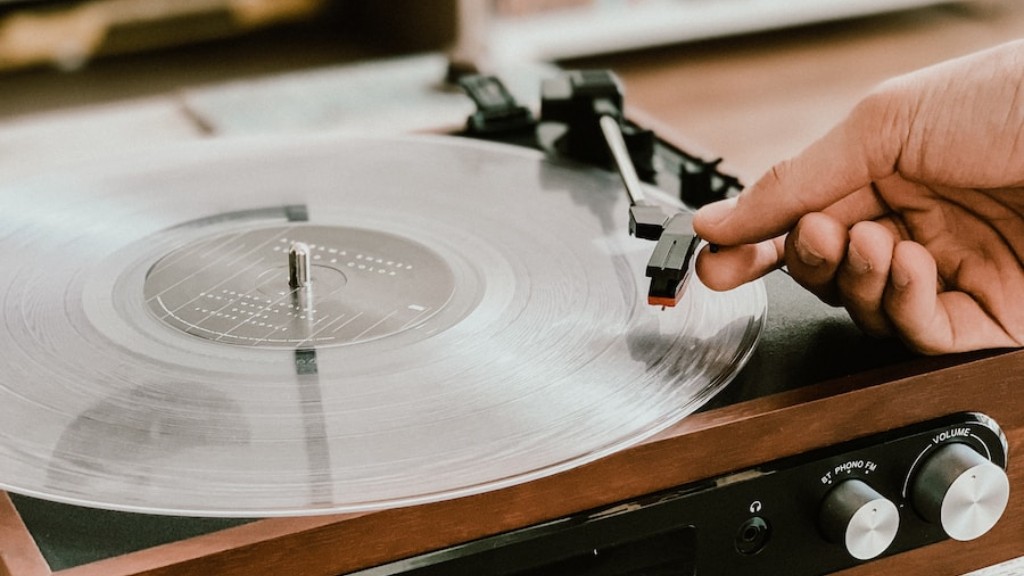In order to sing correctly from your diaphragm, it is important to first understand what the diaphragm is and how it works. The diaphragm is a large, flat muscle that lies at the base of your lungs. When you inhale, your diaphragm contracts and moves downward, which causes your lungs to fill with air.
When you sing from your diaphragm, you are using this muscle to help control your breath and create a fuller, richer sound. To do this, you need to place your hand on your stomach just below your rib cage. As you inhale, you should feel your stomach expand as your diaphragm moves downward.
Now, as you exhale, you will use your abdominal muscles to push your diaphragm upward. This will help to control the airflow and create a more powerful sound. Practice these techniques until you feel comfortable singing from your diaphragm.
The most important thing when singing from your diaphragm is to make sure that you are breathing correctly. You want to take in deep breaths and fill up your lungs. Then, as you exhale, you want to push the air out from your diaphragm, which is located right below your lungs. You should feel your stomach expanding as you breathe in, and contracting as you breath out. When you are singing, you want to make sure that you are using your diaphragm to push the air out, and not your chest.
How do I know if I’m singing from my diaphragm?
This is a great way to get your voice ready for singing. By expanding your balloon, you are increasing the air flow to your vocal cords which will help them to vibrate more easily. Singing over the rainbow will also help to open up your vocal range.
Good posture is imperative to proper singing technique. Stand up straight and exhale fully. Push all of the air out of your lungs, letting your stomach relax under your hands as you exhale. Inhale deeply and sing a sustained note.
Why can’t I sing from my diaphragm
When someone tells you to sing from your diaphragm, they are usually referring to the muscles in your stomach. However, powering from the diaphragm can cause a squeezing sensation in your stomach, which can drop your ribcage and allow the diaphragm to rise too far. This can cause too much uncontrolled breath to reach your vocal cords, which can damage them.
When you sing, it is important to use your diaphragm to control the flow of air. If you see your shoulders go up while you breathe, then you are not using your diaphragm correctly. Breathe deep into the body, and continue that sensation of a downward push while you’re singing in order to regulate the flow of air.
How do I stop singing from my throat?
When you inhale, your diaphragm should push your stomach out like you’re blowing up a beach ball. As you exhale, you’ll feel your stomach deflate. Repeat this 15 times to get the diaphragm feeling ready and raring to go, avoiding pushing those vocals from the throat.
Voice what does chest voice chest voice is the name that we give to that bottom part of a singer’s range where the vocal cords are thickest and the sound is produced with less overtones. This results in a more ‘chest-y’ sound.
Do all singers sing from diaphragm?
It is very important for singers to learn how to sing from their diaphragm. This is because the diaphragm is the main muscle that supports your voice. There are many different breathing techniques that can help strengthen the diaphragm and teach your body to engage all the proper muscles when singing.
Breathing into your belly is not an effective way to sing. The abdominal muscles are forced out on the inhale, which redirects the energy out of the shoulders. This does not help you find an optimum breath for singing.
Why do singers hold their stomach
Singing with your stomach is a much better way to be heard and to make your voice carry. Diaphragmatic breathing can expel the air stored up and create a better sound. This will allow you to sing more loudly.
The shape of your tongue can have a big impact on your singing voice. If your tongue is lifted and curved, it can help you produce a more pleasant sound. Make sure that your tongue is nice and relaxed, and avoid tension in your jaw, neck, and face.
Should you always sing with chest voice?
Singing in your chest voice is an effective way to use the air flowing through your larynx for healthy vocal cord vibration. By using less energy, your vocal cords will be able to vibrate more efficiently and produce a healthier sound.
When you are breathing deeply, the muscles in your back and abdomen should be supporting the diaphragm’s movements. There should be minimal chest displacement and the rib cage should not collapse between breaths.
How do I stop singing from my nose
When you’re singing, it’s important to breathe all the way down to your diaphragm so that you have better control over how much air you release. If you hold your breath in your chest, your vocal cords will strain to control the air quality and you’ll end up singing through your nose.
You may be singing with too much tension! Try letting go of any unnecessary tension in your body and see if that helps. If you’re still struggling, consult a vocal coach or therapist for help.
Is it easier to sing in head voice or chest voice?
If you want to sing in your upper range, you need to develop a head voice. This type of voice is used for most higher notes, with the exception of occasional belting. Using a head voice can be tricky, because it won’t be as powerful or natural to you as your chest voice. You need to fully support your airflow to make it work.
In order to get rid of phlegm, it is recommended that you vocalize on a high or low note, and stretch out your voice. This will help to break up the mucus and make it easier to expel. Additionally, staying hydrated by drinking plenty of fluids will also help to thin out the mucus and make it easier to cough up.
Can throat singing damage your voice
Although vocal fry is not physically harmful to the health of the voice, it can become a habit if not used in moderation. Johns Hopkins otolaryngologist, Lee Akst, MD advises against overusing vocal fry as it can lead to the formation of bad vocal habits.
Singing is a great way to give your core muscles a workout. As you exhale, your core muscles will activate immediately and continue to contract until you take in another breath. The more air you push out, the harder your abdominal muscles have to work. This is a great way to tone your core muscles and get in shape.
Final Words
To sing from your diaphragm, you need to first understand how your diaphragm works. The diaphragm is a dome-shaped muscle that sits at the bottom of your rib cage and is the primary muscle used for breathing. When you inhale, the diaphragm contracts and moves downward, creating negative pressure in the chest cavity. This negative pressure causes the lungs to inflate and air to enter the lungs. To sing from your diaphragm, you need to use this same process, but with some slight modifications.
When you inhale, you need to allow your stomach to expand first. This will help to create more space in the chest cavity for the diaphragm to move downward. Once the stomach has expanded, you can then begin to slowly exhale while you simultaneously contract your diaphragm. As you exhale, you should feel your stomach moving inward. The combination of the downward movement of the diaphragm and the inward movement of the stomach will help to push air out of the lungs.
It may take some practice to get the hang of singing from your diaphragm, but once you do, you will notice a significant difference in your vocal quality.
If you want to sing from your diaphragm, you need to make sure that you are using your abdominal muscles to support your singing. The best way to do this is to sit up straight and put one hand on your stomach. As you inhale, you should feel your stomach expand. Then, as you exhale, you should feel your stomach muscles contracting. You can also try to stand up straight and put your hand on your stomach. As you exhale, you should feel your stomach muscles tightening.



